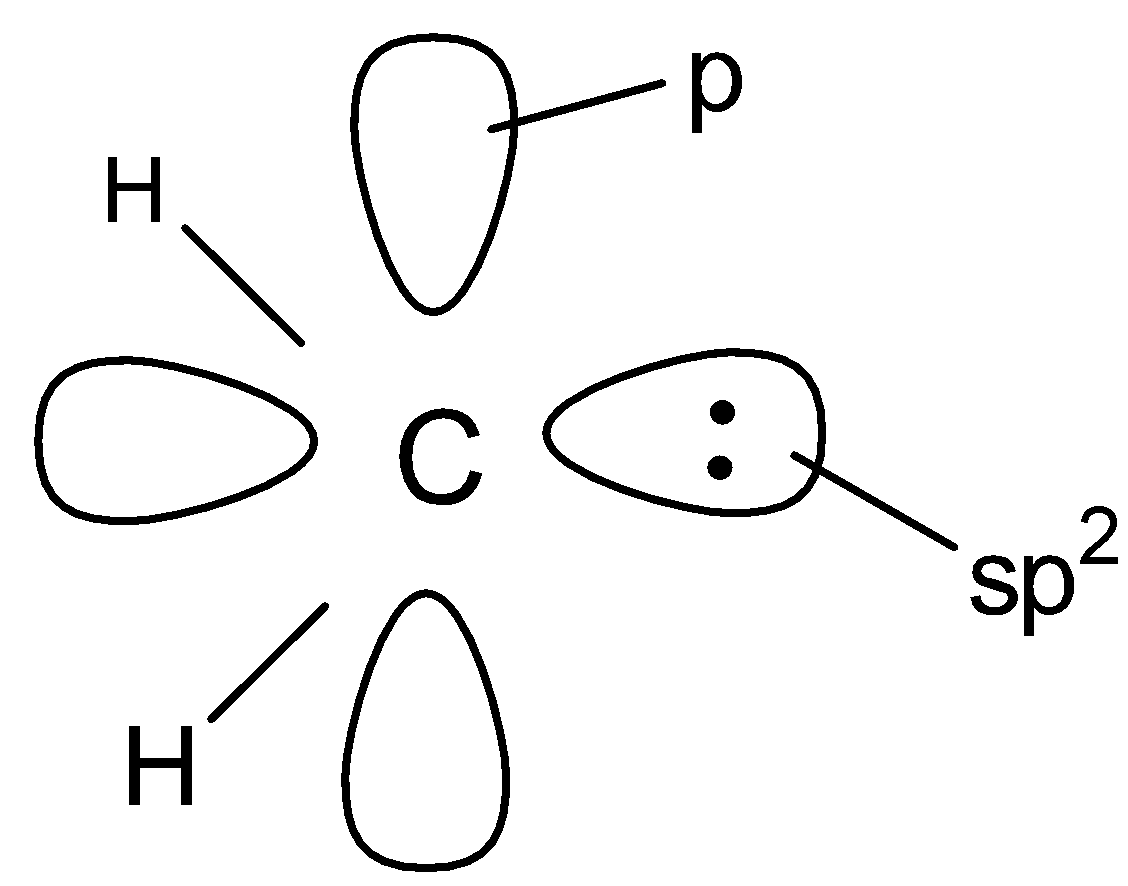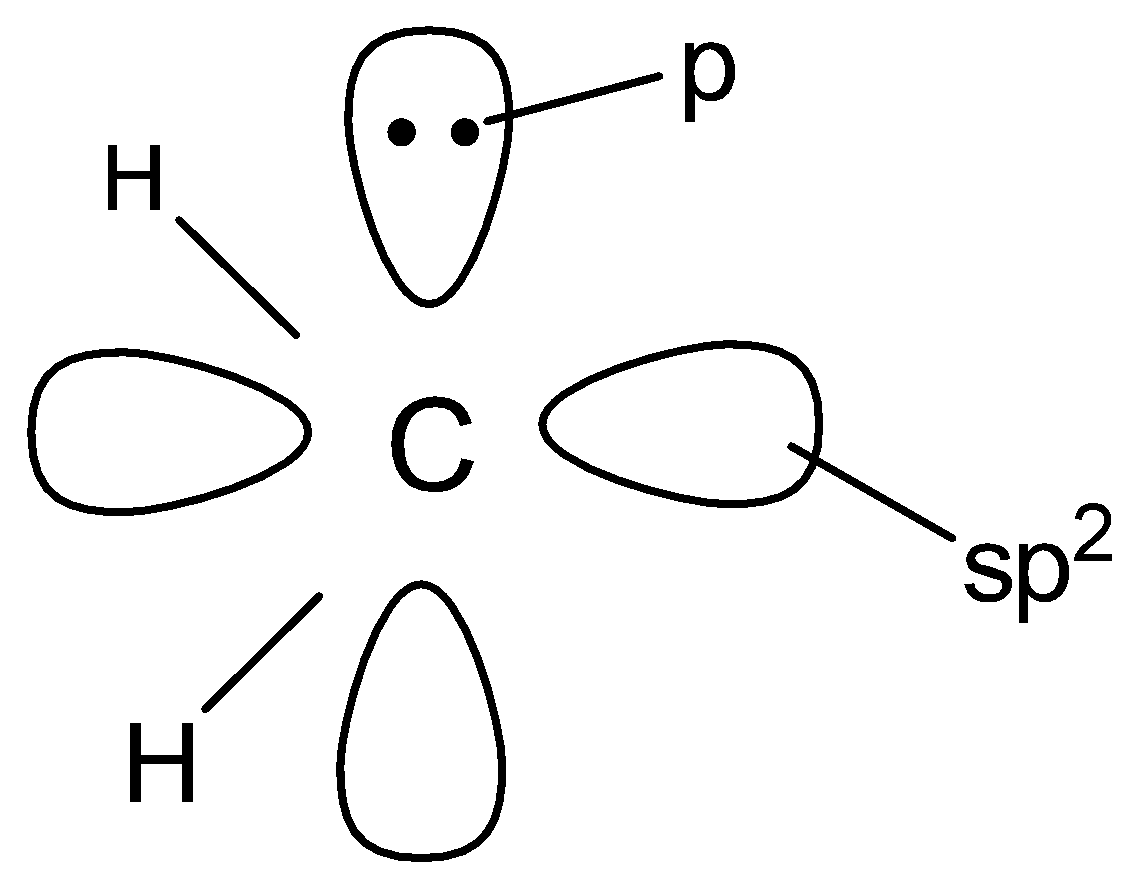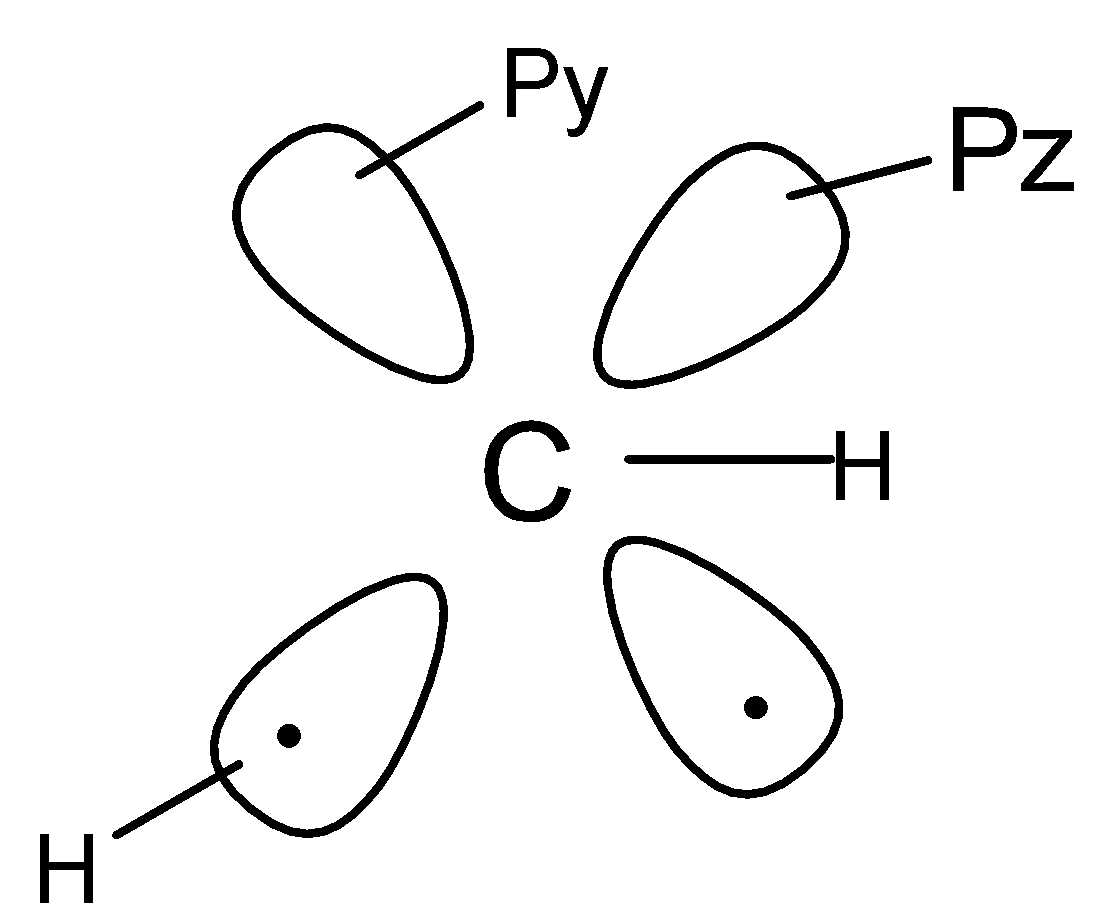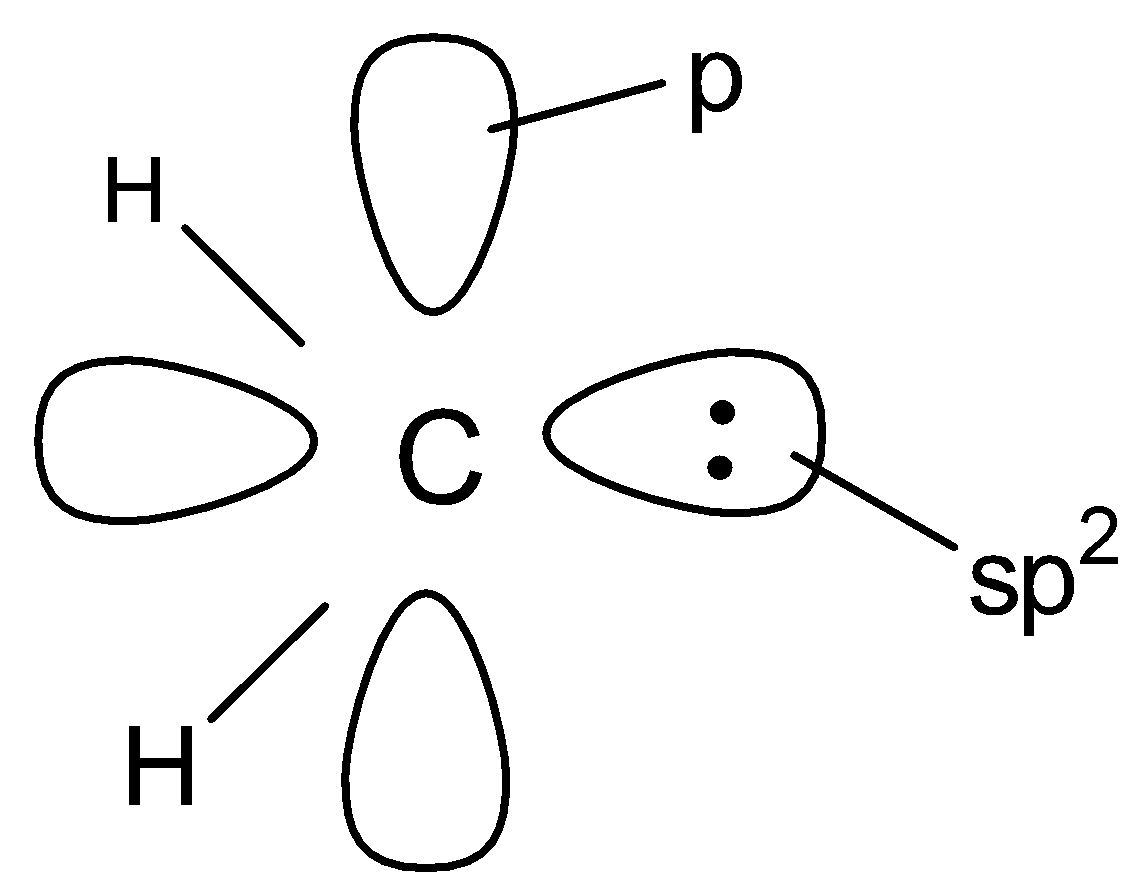
The orbital picture of singlet carbene $\left( {:C{H_2}} \right)$ can be drawn as:
(A).

(B).

(C).

(D). None of these.



Answer
462k+ views
Hint: Neutral divalent carbon species in which the carbon atom is bonded to two monovalent atoms or groups and also contains two non- bonding electrons are called carbenes .
Complete answer:
Carbenes are generally produced either by photolysis ( irradiation with UV light ) or thermolysis or pyrolysis ( action of heat ) of diazoalkanes or ketenes .
Now talking about the orbital structure of carbene , there are two types of carbenes , that is singlet carbene and triplet carbene . Singlet carbenes are less stable than triplet carbenes since triplet carbenes have a linear structure and behave as a diradical whereas singlet carbenes have bent structure .
In singlet carbenes , the central carbon atom is $s{p^2}$ hybridised . Two of the $s{p^2}$ - hybridised orbitals form two $\sigma $ - bonds with two monovalent atoms or groups while the third $s{p^2}$ - hybridised orbital contains two non - bonding electrons . The unhybridized p - orbital is , however, empty . Thus , a singlet carbene has a bent structure .
So according to the above description , the orbital structure of carbene will be

Hence option A is correct .
Note:
Just like carbocations , carbenes are short lived highly reactive chemical species since the central carbon atom has only six electrons in its valence shell and thus has a strong tendency to complete its octet by gaining two more electrons . Carbenes , thus behave as Lewis acids or electrophiles .
Complete answer:
Carbenes are generally produced either by photolysis ( irradiation with UV light ) or thermolysis or pyrolysis ( action of heat ) of diazoalkanes or ketenes .
Now talking about the orbital structure of carbene , there are two types of carbenes , that is singlet carbene and triplet carbene . Singlet carbenes are less stable than triplet carbenes since triplet carbenes have a linear structure and behave as a diradical whereas singlet carbenes have bent structure .
In singlet carbenes , the central carbon atom is $s{p^2}$ hybridised . Two of the $s{p^2}$ - hybridised orbitals form two $\sigma $ - bonds with two monovalent atoms or groups while the third $s{p^2}$ - hybridised orbital contains two non - bonding electrons . The unhybridized p - orbital is , however, empty . Thus , a singlet carbene has a bent structure .
So according to the above description , the orbital structure of carbene will be

Hence option A is correct .
Note:
Just like carbocations , carbenes are short lived highly reactive chemical species since the central carbon atom has only six electrons in its valence shell and thus has a strong tendency to complete its octet by gaining two more electrons . Carbenes , thus behave as Lewis acids or electrophiles .
Recently Updated Pages
Class 12 Question and Answer - Your Ultimate Solutions Guide

Master Class 12 Social Science: Engaging Questions & Answers for Success

Master Class 12 Physics: Engaging Questions & Answers for Success

Master Class 12 Maths: Engaging Questions & Answers for Success

Master Class 12 English: Engaging Questions & Answers for Success

Master Class 12 Chemistry: Engaging Questions & Answers for Success

Trending doubts
Which are the Top 10 Largest Countries of the World?

Differentiate between homogeneous and heterogeneous class 12 chemistry CBSE

Draw a labelled sketch of the human eye class 12 physics CBSE

What is a transformer Explain the principle construction class 12 physics CBSE

How much time does it take to bleed after eating p class 12 biology CBSE

What are the major means of transport Explain each class 12 social science CBSE




